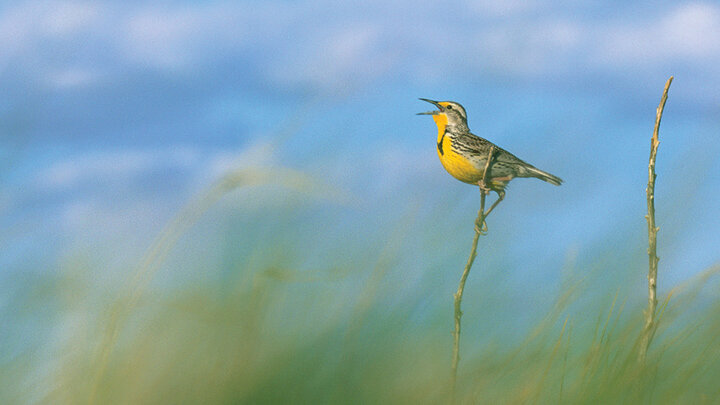The line between optimism and despair is grass-blade thin. Ranchers live within this narrow gap day to day, season to season. As contradictory as the Sandhills themselves, ranchers are a paradox. Stubborn in purpose, yielding to progress. Dreamers and optimists all, despite the grumblings. Their character is proven by action. Year in and year out, moving through the seasons. Facing setbacks, barely trusting small victories, they keep going. Keep trying. Planning for the worst, hoping for the best.
While each ranch is singular in detail, there is commonality in environment that creates a shared backdrop. There are straightforward reasons, repeated by plain-dealing people, to ride the dips and swells of this land and life. But the most powerful draw, the tugging force that anchors ranchers to this sandy country, is not easily or logically defined. The push and pull of survival can rarely be planned or properly recounted. It can only be played out over time.
This chapter recounts one ranch’s experiences. It does not, and should not, represent the story of every ranch in the Sandhills. Each ranch, each family, has equally important tales to tell. But across this common stage, there are patterns that connect. Here, in the sand, are impressions of determination, joy, heartache, beauty, courage. These, and more, make up the seasons of the Sandhills.
Calving Season
A quick cup of coffee and it’s time to head out to check again. The hills reflect a pink glow for a few minutes as the sun fully rises on this brisk morning. Following the familiar route in the calving pasture everything seems calm, with cows spread out grazing or laying down chewing their cud. Being sure to check the spots that cows often choose to calve (sometimes for reasons only known to the bovine mind) the age-old process is starting. The water bag is out, I back away to give her time and privacy.
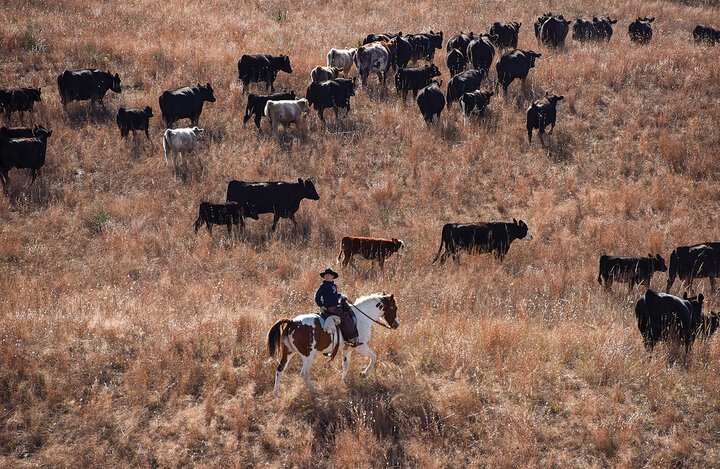
After checking the rest of the pasture I wait on a small hill before revisiting the calving cow. The breeze starts to stir while the meadowlarks call out all around me. I tilt my ear toward the boom of the prairie-chickens I know are a few ranges over. I look the other way wondering about the sharp-tails . . . but movement catches my eye. A young muley buck is sidling up the opposite hill, on the trot. He freezes to look at me, broadside and beautiful. In an instant he’s gone over the crest without a sound or second look. Time for me to go, too.
When I come over the small rise I see the sun glint off the wet newborn calf, wobblily raising his head from the flattened grass, while the cow turns in a circle to smell him. I notice one eye is surrounded by a patch of black on his otherwise white face, with a black body and a hint of white on his stomach. The cow senses me and sends a true mother dragon stare accompanied by a warning snort. “Good Mama,” I whisper and once again back away. We’ll come back later to make sure the newborn is up and able to nurse before ear tagging him and sorting them into an adjoining pasture with the other pairs of cows and newborn calves.
Every calving season has its ups and downs. With “spring” calving usually taking place anywhere between February and June, the metaphorical start of the rancher’s fiscal year encompasses extreme highs and lows. From blizzards to pleasant warm days, weather is often the adversary or advantage.
Regardless of weather extremes, diligent round-the-clock care is given. The work only increases as the season wanes on, with more calves on the ground. Human patience and endurance are tested while toiling in a stark world that is just awakening from winter’s stillness. As each calf drops to the ground to rise, hope does as well. Slowly, new life begins to emerge and resurrect. Internalizing those moments helps motivate goals and aspirations. But reality whispers; without a successful calving season, there will be fewer calves to sell in the months ahead. Less income against rising costs. No matter how strong the dream or pull of the lifestyle, ranching is a business like any other. If only perseverance could be bottled.
Returning to the corrals to do barn chores, I notice the tiny shoots of green poking out from last year’s growth. We’ve had a lot of moisture the past couple of years, soaking deep into the hills, until being pushed back out through seeps and springs. It’s hard to watch water go away. I wish I could hold onto it for the dry spell. Because it will be dry again someday. But now, the grass will have a good start to the growing season, which offers a promising year and one less worry.
Growing healthy calves on healthy grass. That’s a good start.
Growing Season
The fledging life of spring blooms under the warm sun. Fawns follow close, butterflies graze, grass stretches up toward the sky. The ground moves with life. Ants and beetles frantically traverse the grainy particles, dodging the mounded excavations of pocket gophers. Working, strengthening for what’s coming next. Above, up in the cottonwood, the eagles labor as well. Daily tending the huge nest that houses their own future. Life between these two spheres also finds ways to thrive amid the privations of a sandy country. Using this season to repair, revive, spread, and prepare. So do we.
The growing season is a season of hope, as long as it rains. Witnessing life taking its due course is thrilling in its glory and terrifying in its fragility. The best we can do is allow the hills to swell with life as they were intended, offering a helping hand when we can, patiently bearing any losses. The growing season always seems too short, but we’re in it for the long haul.
When the summer pastures have grown enough to support grazing, we trail the newly branded baby calves with their mommas to the hills. After feeling closed in through winter and spring, it feels heavenly to ride out in the open. Greenup has come timely and is slowly overtaking the muted hues of last year’s remaining growth. I breathe in the smell of soft, damp earth as it slowly warms underneath my horse’s hard feet. The breeze rustles the puccoons on the hillsides, drawing my eye to the sharp yellow flowers. I’ve missed the colors of the growing season and am excited to greet all the prairie plants again in their brief turn.
Perhaps the unsung heroes of calving season are the mounts used to aid the rancher in this endeavor. Much more than a mode of transportation, ranch horses assist in nearly every facet of the day. Like all companions, they learn their partners and roles well. They aid in checking,sorting, and doctoring cattle and drag calves to the fire at branding time. Some even become quite the physical protectors of their riders, using their own bodies as shields if necessary. There are many memorable moments made during calving season, but the fondest ones usually involve a horse.
The cows and calves we’re taking to summer pasture may not feel the same sentiments exactly as I do, but they are happy too. The old cows know what’s up. They lead the way to fresh grass with a determined stride, snatching a mouthful of tender green along the way. The calves run and buck, relishing the chance to stretch their legs and bluff their bravado. The calf with the patch of black around his eye catches my attention before dashing ahead. Like his herd mates, he’s slick and shiny with bright eyes. Everything is fresh and clean under a gentle May sun, full of promise and potential.
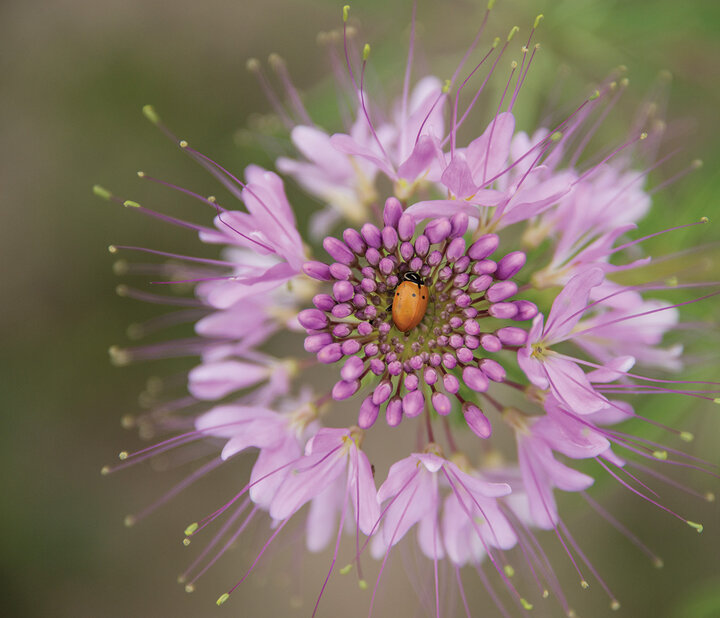
We arrive at the pasture these pairs will call home for the next months. As with the other pastures, the fence has been gone around and fixed in preparation. The windmills have been turned on and serviced to ensure water. A grazing plan has been made and modified to aid us in harnessing the natural process of grazing to forward our stewardship goals. Soon, the bulls will be turned out, beginning the cycle of life once again.
But all that fades to the background as I take another breath of sweet Sandhills air under a baby blue sky and revel in the simple pleasures of the day. We stop at the windmill and settle the herd. While mothers and babies reunite, we listen to the whine of the fan and soft clatter of the rods that draw water up from the ground. Slowly we sort off the pairs until we’re sure every calf has found its momma. After seeing the calf with the circle of black around his eye a few more times, I start calling him Patch in my head. Not real original, but easy and fitting. We turn around to ride home in the dimming light. The evening brings a flash of coolness, making my shoulders tense. But I know it’s only temporary, because tomorrow I’ll feel the warmth of joy again as we go back to summer pasture.
We’ll continue to check the pastures throughout the season, a chore that will need to be done a couple times a week, more if it’s hot or the wind doesn’t blow enough to keep water in the tanks. The growing season requires keen observation and monitoring. It offers the greatest potential of influence from management. Reading the cattle for health and the pastures for growth and grazing response takes a practiced eye and confidence in decision-making. Short-term adjustments contribute to long-term trends that the land will reflect. Balancing the best interests and needs of ourselves, the livestock, the wildlife, the prairie, and the future is a constant give-and-take that becomes embedded in our daily choices.
June watches the puccoons give way to penstemon and larkspur, adding a touch of grace amid the needleandthread grass. Dickcissels join the meadowlarks to serenade us as we rotate cattle through the pastures with grasshopper sparrows buzzing in the background. The calves take advantage of good eats and mother’s milk, growing in frame, muscle, and attitude. The colts find their legs as well, flying down the soft hills, leaving their mothers trailing patiently behind. And the timely rains and warm sun promise that a nice hay crop is on its way.
The heat of mid- and late summer pushes the warm season grasses on the hilltops to thrive. The late afternoon clouds pass in front of the sun making a swift moving patchwork of shadows over the varying shades of green. Watching the patterns disappear across the hills reminds me time is fleeting and spurs us to work quickly to make hay while the sun shines. On the meadow, bobolinks sway with the tall grass at the edge of the hayfield while a harrier soars low over the adjacent hills. We push to make every day count, finishing in the light of a broad Sandhills sunset, knowing our fatigue has made a difference.
As the growing season tapers, the pressure of preparedness niggles into our conscience. Although the days are still sweat soaked, winter is beginning to whisper in our minds. There’s much to be done to get ready. Harvesting the hay that will help feed the livestock is paramount. It won’t be long before we bring the cattle home from summer pasture, making a whole new set of chores.
But there’s still time. So for now, I count my blessings. Working with my family and kids every day is at the top of that list. Multiple generations, side by side, building upon a grounded and visible history. Providing a very real sense of place and purpose. Playing in the rodeo arena at night, finding reasons to laugh together every day, no matter the circumstances. Teaching each other to echo our surroundings by living brightly in our limited time.
Weaning season
Autumn is heavy. The air on a flushed fall day feels saturated above the still-warm sand. Seed heads droop with their bounty, shimmering across the hills. The undulating grass entices the wind to help spread the last of their lifeblood until the sowing is done and winter stills the ground again. The cows walk slowly out of summer pasture with burgeoning bellies, full of summer’s richness, with calves at their side and new life growing inside. The colors on the animals turn strong and deep, perhaps in defiance of the upcoming gray months. The prairie stems shift to a brindle palette ranging from umber to crimson, mirroring the robust tones of the season’s sunrises.
My signal that fall has arrived is when an ancient trill turns my eyes up to the sky. The sandhill cranes marching south again settles it. They lead the way to a warmer promise while our resident prairie-chickens and grouse flock up to stay put. Now winter is not just around the corner, it’s on our doorstep, and it looks hungry.
If the growing season is a time of hope, weaning season is a time of optimistic uneasiness. Weaning the calves from their mothers is much more than physical separation. It’s a harvest of our living product but more than just an animal. It’s a reflection of the countless hours of care, years of planning, and improvement of the land and herd, our sweat and tears imprinted into each individual calf. A representation of what’s come before us, our stubborn diligence and future hopes. But rarely do we solely determine what our hard-won product is worth. Like many facets of ranching, several variables out of our control will decide what our income is for the year.
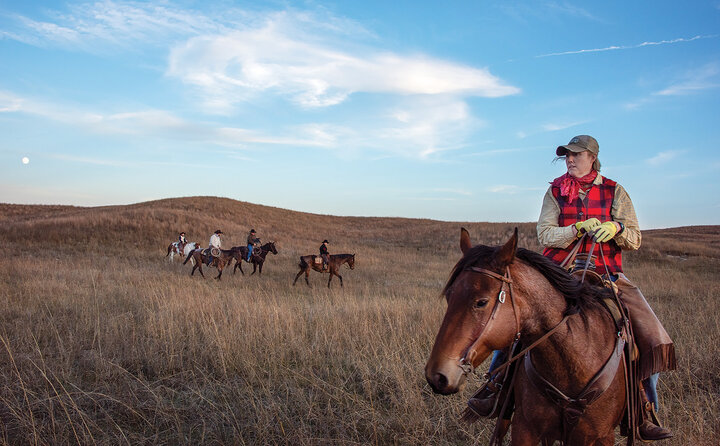
Instead of focusing on the gambles involved, it’s best to zero in on factors we can control. So we do our best to help wean the year’s calf crop in ways to reduce stress and optimize health, setting them up for success in preparation for their next step. The calf I call Patch is part of that process, learning how to navigate on his own. He reminds me of a teenager: portraying a tough guy image but missing momma underneath. Blowing snot at me to impress but a little scared of all the new changes. I chuckle at his antics and tell him we’ll help him through.
The weaned calves can be marketed in a variety of ways. Whether via private treaty or public auction, seeing the calves leave the ranch is often bittersweet. A strange mix of emotion stirs. From pride of product, loss of animals you enjoy and care about, nerves regarding selling price to gratefulness for the necessary business income. But focus is soon returned by looking forward. A snapshot of the future is “preg checking” the cows. Finding out how many cows will be producing a calf next spring is another pivotal day that has the power to determine fiscal success or struggle for another year.
We prepare for winter by buttoning up the growing season. Bulls have already been pulled from the herd, windmills will need to be shut off, and hay still needs to be hauled. Cattle are brought into pastures a little closer to the home place where they can be taken care of easier if the weather turns bad. We lay the groundwork for cold weather, thankful for every pleasant day of fall.
Winter
This is where the bluff is called. Winter weeds out the weak, promising rest only for the well-prepared while demanding patience and fortitude. It forces us to acknowledge our own strengths and limitations, hopefully enabling us to accept ourselves in the grander scheme of Time. Unyielding as cold leather, it’s a time of waiting and persevering. But also a time for planning what the next year can be.
Patch, the now almost-yearling, is part of a group of calves that were not sold in the fall but retained to sell later. His winter hair has come in thick and a bit shaggy with a healthy sheen, protecting him from the elements. Even so, I marvel at how well he does, along with all of the animals in this now hard and unforgiving environment. Their capability to do well in the extremes of our climate, recycle nutrients from the land that are otherwise mostly unusable, and turn that into a benefit for themselves and us is an often-overlooked wonder. But all Patch is concerned with is what the tractor is bringing him today as he (somewhat un-athletically, I must admit) runs and kicks up in an exuberant celebration of feeding time.
I’ve never heard winter referred to as the feeding season, but that pretty much sums it up. The once strengthening grass has become dormant, losing its nutrition. While still valuable forage, some type of protein supplement helps keep the ranch livestock in optimal health. Of course, if the grass becomes covered up in white, hay will need to be fed to meet their needs as well.
Heading out to “cake the cows,” feeding them protein cubes on pasture, is an enjoyable chore. The cows are eagerly summoned by the honk of the horn or whine of the siren to gather for the beneficial treat. It’s a good time to play with the tamest or bravest of bovines, feeding the cubes by hand while waiting for the laggers to amble out of the hills. That time can also serve as a moment of private reflection and future planning. Something about being alone in the hills encourages an inward conversation. The sand seems to offer a soaking up of cares when you need it.
As enjoyable as caking can be, I have the opposite sentiments for breaking ice. Yet the cattle need to drink, so it’s a necessary evil. To be fair, there is something quite satisfying about swinging an axe into a solid chunk of ice to have it break clean. But after the ice is broken, the chunks need to be lifted with a pitchfork and thrown clear. After the third or fourth tank my cold fingers swell up like pickles, struggling to bend around the axe and pitchfork, while my weak back complains. Working on a large tank causes me to sweat under my many layers of clothing. This does not help as I travel to the next stop, muttering scathing remarks to the frigid wind that snakes under my collar.
But discomfort helps punctuate the pleasures. Finding a place out of the wind, warm toes, and the restorative power of a hot meal are among the blessings craved and relished. And while winter can be harsh in the hills, it still shows moments of startling beauty to lift our spirits. I’m reminded there is a time and season for everything when I see the swans gliding through the foggy air or when the stars loom crisp and bright over a snow-covered night. The morning frost climbs up the stiff stems of the grass, encasing each detail in white, waiting for the sun. The rays encourage the sleeping stalks to sparkle in eye-squinting brilliance, reminding us our treasure is where our heart is, leading us on to another day. After all, spring is just around the corner.
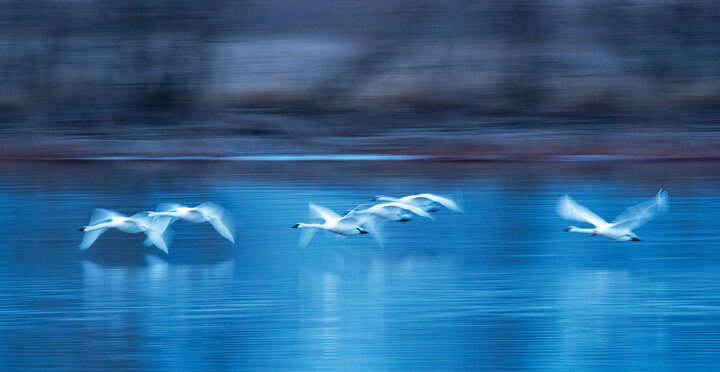
Final Musings
Ranching through the seasons always involves risks and rewards. But whatever the gain or loss, there is appreciation. The lifestyle offers a physicality, independence, and immersion in the natural world that a certain type thrives on. I see evidence of this in the old ranchers in the Sandhills, and there are many. Their bodies have broken down over the years as they gave themselves to their work, to the land. They’re entering their final season of life here. A place where, as men and women, they could create andbe themselves. That trueness to self sounds so simple but remains elusive to many. Here they have kept going, kept trying. Planned for the worst. Hoped for the best. Usually without thought to the world’s judgment but with their own harsh determination of self and sacrifice. Putting the best interests of the land before themselves. But every old rancher starts young, and thankfully, the Sandhills also holds present and future stewards that respect the traditions of the Sandhills while breathing new life into their management.
In my own process of becoming an old rancher (for I cannot think of a better thing to be), my feet often lead me to the respite and beauty of the creek at the end of the day. No matter the season, the prairie stream seeps and bubbles vitality from the ground that reinvigorates land, man, and beast. The clear water is lively inside the quiet banks and draws my eye to the bottom. The soft ridges of sand on the creek bed mimic the shapes of the hills around me. The elemental force is different, but the results are similar. Nature repeating itself, just like the seasons from year to year and the souls who live through them. Grand rhythms of complexity and detail that coalesce into what we simply call life. It makes me feel quite small yet flooded with gratitude because I’ve been afforded the chance to experience this shared journey. It can be challenging, but there’s solace in knowing this land always holds to the truth amid an uncertain world. It can belittle you into acknowledgment of a higher order but also offers a gentle raising up. Not on firm ground, mind you. Just a sandy firmament that reminds you a slip is only a prideful moment away. Tread with care, respect, and tireless devotion; it may just hold you up.
